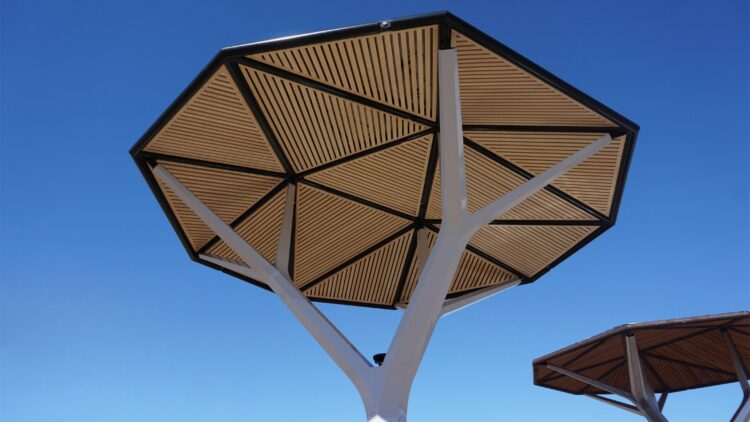The E-Cacias solar trees are the new product that is being introduced in Milwaukee to change the world of renewable energy by bringing functionality and design to Wick Playfield. Solar Forma Design, an outfit based in Wisconsin, designed these tree-shaped constructions to provide shade, lighting, and clean electricity whilst maintaining the valuable ground space for recreation. The installations are named after African Serengeti acacia trees and indicate how solar technology can be incorporated into the city environment with no hassles.
Space-efficient design outperforms traditional solar installations
Conventional ground-mounted solar panels take up much land and cannot easily be passed through, and they also act as visual obstructions within enclosures. E-Cacias ensure that photovoltaic panels are raised but leave the ground space to be used by the community; a better approach in the urban setups where space is a luxury.
Brian Graff, CEO of Solar Forma Design, states that these buildings can produce measurable value by producing power and leaving important items such as lighting and shade that are essential to the contemporary design of the public spaces. Wick Playfield has three trees that directly supply the lighting system and electronic score board at the park through a grid connection.
The inverted umbrella form is to absorb as much sunlight as possible with a lot of shade at the bottom, making spaces to sit comfortably in families in hot summer seasons. It is based on the African acacia tree design, but is also aesthetically pleasing as well as functional in terms of replicating how nature-inspired engineering can help renewable energy systems perform better.
Impressive performance justifies premium investment costs
Each E-Cacia installation costs between $135,000 and $140,000; however, Solar Forma Design stresses that federal and local incentives can actually cut down on the end costs of municipalities and schools, and institutions. The buildings have numerous purposes other than generating energy, which also include educational purposes, as well as images of environmental ingenuity.
The educational possibilities are immense, since such graphical and open systems make the concepts of renewable energy very popular, as far as these types of structures help to make them closer to the daily life of people. The installations can help schools utilize the outdoors as a laboratory to learn science, energy, and sustainability by making abstract ideas concrete to both students and community members.
Other E-Cacias have been installed in Discovery World, Milwaukee, Sheboygan, and Eau Claire, and are being installed in Madison, Wisconsin, and Houston, Texas. This increase indicates a rise in the interest of schools, municipalities, and cultural institutions in new forms of renewable energy.
Functional art transforms public spaces
The E-Cacias proposal addresses the changing nature of the purpose of public art, where the artworks have functional uses as opposed to being decorative sculptures. Graff draws a comparison to the Cloud Gate in Chicago, which cost more than 20 million dollars but became an icon of Chicago that thousands of visitors visit every year.
It also means a lot to people who visit Wick Playfield in the middle of summer, such as Tom Serafin, who goes with his family there and appreciates the shade that is created by solar trees. The buildings produce comfortable socialization areas and generate clean energy that proving that sustainability and livelihood can be harmonizing factors.
The solar trees that were installed in Milwaukee, called E-Cacias, are a complete shift out of the traditional flat panel designs they had installed on their property, and it shows that not only can creative design help maximize energy performance, but it also adds value to the community they serve. These works of art illustrate how renewable energy technology can be used in smoothing urban sceneries, and also have several additional benefits besides electricity production.


